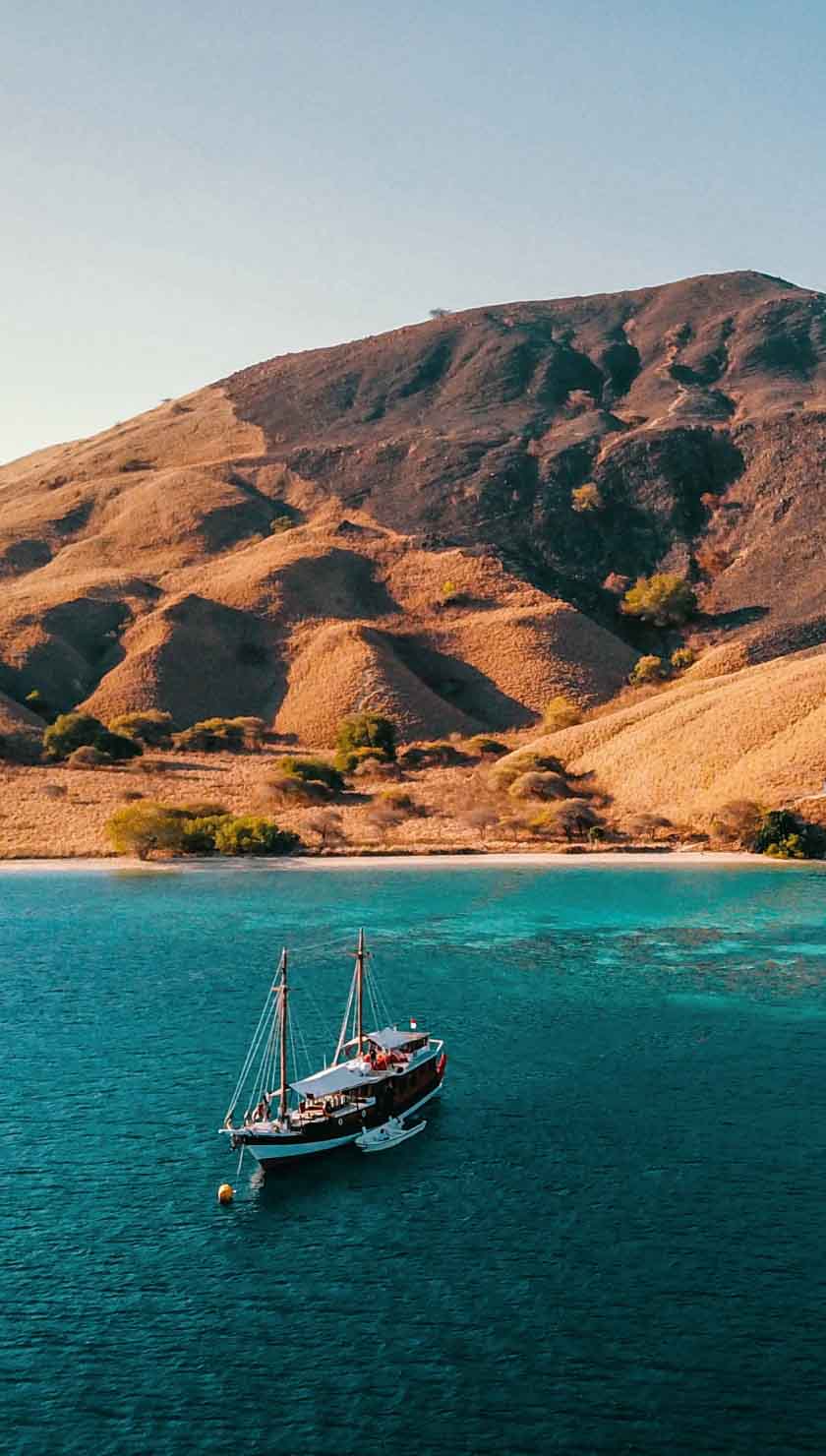Best Spain cruises and areas to visit
Sailing the open sea is unique and must be experienced with the five senses. This can be enjoyed at its peak in the blue waters of the Canary Islands. With the islands' rich nautical history spanning hundreds of years and familiar trade winds, the Canary Islands are best explored by sea. After all, Christopher Columbus used these islands as his last stop before venturing into the new world!
Some of the best places to check out are:
Costa del Sol
Reaching from the enchanting port town of Malaga along the coast to Gibraltar, the Costa del Sol is one of the best-loved spots in the Mediterranean for holidaymakers. Beautiful topography, endless beaches, and some of the best weather in Europe are just some of the reasons this region is perfect for a small ship cruise around Spain. Cruises of Spain will stop off at historical ports such as Malaga and quaint coastal towns and huge sweeping beaches.
Seville
Although not on the coast, Seville is a cruising spot in Spain thanks to the river Guadalquivir. The city’s waterways are great for traveling around and enjoying historic churches, minarets, and Moorish palaces. Seville is a wonderful blend of modern architecture and historic buildings from throughout Spain’s fascinating past. It is also the place to experience the Andalusian culture with traditional flamenco dancing and many local delicacies, including the famous Seville oranges.
Cadiz
One of Spain’s oldest cities, a small ship cruise to Cadiz allows you to see the multicultural nature of Spanish history. Moorish eastern architecture sits alongside later Catholic cathedrals in great numbers. The city has so much to offer, with the famous beach Playa de la Caleta right in the town's port flanked by two historic castles. The region is also well known for its food, with seafood a particular delicacy thanks to the extensive fish market in the heart of the town.
Canary Islands
The Land of the Eternal Spring, a cruise around Spain’s Canary Islands, takes you across this varied and beautiful archipelago. The lively and well-known islands of Tenerife, Gran Canaria, Fuerteventura, and Lanzarote have miles of beaches, charming towns, and year-round spring weather. The outlying islands of El Hierro, La Palma, and Gomera are an opportunity to see the Canaries' untouched beauty and encounter exciting marine life, such as whales, dolphins, and turtles.
Best time to cruise in Spain
Spring (March to May) is the best time to visit Spain for those who want to avoid the peak summer crowds. There’s still plenty of sunshine, but emptier beaches and cities. The Canary Islands receive the winter sun between November and January, although the summer brings in many tourists and adventure travelers.
The weather is warm all year round, dipping below 20°C in the winter months of December to February, usually only in elevated areas. Winter brings wildflowers like corn poppies and Cirsium that bloom in March and April alongside the dancing whales and dolphins in the ocean! In July and August, temperatures hover around 30°C with a cooling coastal breeze in most places. It dips slightly lower in September and October, making it the best time to visit the Canary Islands when the sea is lovely and warm for swimming.
How to get to Spain
Spain’s two largest airports, Madrid-Barajas and Barcelona-El Prat, are among Europe’s best-served, so finding flights into and out of the country is a cakewalk. Coming from elsewhere in Europe, it’s possible to fly into one of Spain's many other smaller airports. Coming to Spain by land from elsewhere in Europe is also possible since Barcelona serves as the main hub for international trains and buses from places like Paris and London.
The Canary Islands are the southernmost point of Europe. Many flights daily connect the islands to most of the EU countries within a few hours. But the easiest way to reach the Canary Islands is usually via a two-hour flight from Madrid. However, for adventurous travelers with a bit more time on their hands, the Canary Islands are accessible from Spain via a ferry from either Huelva or Cádiz. The trip will take anywhere from 32 to 42 hours. Although all islands of the archipelago have airports, the busiest airport is Tenerife South Airport (TFS), an international airport. Most citizens from the Schengen area do not need to pass any control, making travel very breezy.
Spain Cruise Tips
Here are some top tips for your next Spanish cruise sojourn.
Plan Ahead:
Spain is a country with curated itineraries for all seasons. Friendly and welcoming citizens and natural and man-made marvels make it a favorite destination for everyone. Cruises around the Canary Islands get sold out quickly and are usually booked up to the next few months. It’s imperative to plan the trip well in advance and get great bargains on flight tickets as they skyrocket during the on-season, which is winter and summer.
Arrive Early:
Although the cruise asks its passengers to arrive at 4 pm to board the boat, they advise guests to take flights that will arrive before 1 pm and book transport out of the port of arrival only after 1 pm that day. Since the island has so much to offer regarding hikes and trails, historical monuments, and delicious cuisines, a general suggestion is to arrive a couple of days before the sail around the Canary Islands embarks.
Choosing the right trip:
The trip is for 7 days and 6 nights, cruising from Tenerife to La Palma to La Gomera and back to Tenerife onboard a 56-feet sail yacht designed to take guests through the stunning islands of Spain’s famous Canary Island archipelago. Guests can go hiking, snorkeling, and relaxing on the beach or the sundecks on board. Exploring historical sites, café-lined harbors, and opportunities to spot dolphins and whales are just the cream of a delicious trip. It is curated for a maximum of 10 passengers, but guests can also make it a private charter while booking.
What to pack
Since the trip is a cruise on a sailboat and because the Canary Islands are sunny, it's important to have high-SPF sunscreen and after-sun lotion at hand. Beach hats and cover-ups, flip flops or water shoes, sunglasses and swimwear, and a re-useable water bottle are some key items guests should remember while packing for this trip. A pair of sports shoes or trekking shoes for hikes and a pair of long trousers for men must be considered as there are hotels that impose dress codes for men in the evenings. A dry bag, binoculars, flashlight, camera, personal first aid kit, preferably biodegradable toiletries, and a windproof rain jacket are also essentials while packing. Personal documents, an external battery pack, and a plug-point converter are also crucial.
Snorkeling gear:
Although snorkeling gear is usually available on board, it is best to carry your own snorkeling masks and fins that are a proper fit and will keep you most comfortable in the water.
Spain Travel Advice:
Some important personal documents that should be carried for travel in and around Spain include flight information, insurance information, passports with relevant visas, vaccination certificates, vouchers, and pre-departure information for cruises. Spending cash is always a plus, apart from having bank cards. It's great to consider your spending habits and account for drinks, shopping, and tipping. A wise decision would be to keep an emergency fund with a couple of hundred euros in your pack.
Spain Local Tips
- Spain is part of the European Union, and it is possible for those with a visa for this region to travel without any additional paperwork. The local currency is Euro, and credit cards are widely accepted, although it is worth noting that there will almost always be a charge for using your card in Spain.
- The Spanish people keep different hours than you might expect; most shops are open quite early but shut for the famous ‘siesta’ time in the afternoon. During siesta, restaurants will be open for long sociable lunches and coffees, but shops and banks will close for around two or three hours.
- One of Spain’s most interesting traditions is the eating of tapas or pinchos, small snacks taken with a drink. These are not meant to be a meal, although many other countries present them as such. In many places, when you order a drink, you might find it accompanied by a small tapa you didn’t order. These can be some of the most exciting and delicious delicacies you can try in Spain.
- The Spanish way of life is very relaxed, even for the Mediterranean, often giving visitors the impression that service is slow; however, this is done to allow people to relax and socialize together over a long lunch. Embracing this attitude and abandoning any thoughts of rushing will be part of the local experience in Spain.
- Mainland Spain is very hot in the summer, so be sure to wear sun protection, and a hat is a wise choice if you will be under the sun for any length of time. The Canary Islands are closer to the equator, so it can be even easier to burn here. There are mosquitos in mainland Spain, although there will be fewer onboard a cruise and by the coast. The Canary Islands have no such biting insects due to their isolated nature.
- There are some rules and regulations that are specific to the Canary Islands. As a duty-free area, you must obey the limits for duty-free items. Also, taking hired cars between the islands on the ferry is prohibited.











